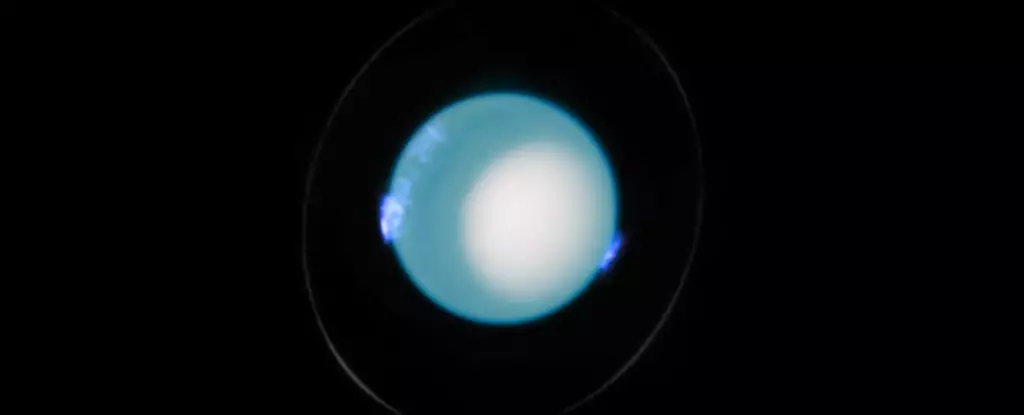In a groundbreaking revelation that turns our previous understanding upside down, recent observations have definitively measured the length of a day on Uranus to be 17 hours, 14 minutes, and 52 seconds—28 seconds longer than prior estimates based on data collected during the Voyager 2 mission in 1986. While such a time difference might seem trivial at first glance, it actually holds substantial implications for planetary science, from refining our knowledge of Uranus itself to enhancing our ability to study magnetic fields across the outer Solar System.
The Consequences of Misinformation
The inaccurate assumptions surrounding Uranus’ rotational period have created notable challenges within the scientific community. According to Laurent Lamy, an astrophysicist at the Paris Observatory, the previous coordinate systems that relied on incorrect rotation durations became obsolete very quickly. Consequently, this obsolescence hindered scientists’ ability to precisely track the magnetic poles of Uranus over time. A planet’s magnetic field is vital for understanding its internal structure and dynamics, and having a distorted view of this should be alarming for anyone interested in planetary science.
The inaccuracies have not just been academic curiosities; they have tangible repercussions in research. Without a reliable measurement of Uranus’ rotation, the orientation of its magnetic poles began to elude scientists just a few years after the Voyager 2 flyby. This disconnect creates roadblocks in our capability to conduct longitudinal studies, potentially leading to conclusions based on thin air.
The Quest for Accuracy: Advanced Methodologies
To rectify this long-standing issue, Lamy and his team engaged in rigorous analysis of data captured by the Hubble Space Telescope between 2011 and 2022. By observing the ultraviolet auroras of Uranus, scientists employed a method akin to the one used to study the Aurora Borealis on Earth. The auroras are the result of particles from the solar wind interacting with the planet’s magnetic field, illuminating the upper atmosphere in stunning displays. Observing these phenomena provides crucial insights into the planet’s magnetic dynamics.
Uranus presents some unique challenges in studying its magnetic orientation due to its rotation axis tilting nearly parallel to the ecliptic plane. This tilt complicates the identification of its magnetic poles. Despite this challenge, Lamy’s team successfully traced these poles by focusing on the ultraviolet auroras, paving the way for a more precise understanding of rotational dynamics. Their accomplishment marks a significant milestone, not just for Uranus but for planetary science in general.
Broadening Horizons: Implications for Future Research
This newfound precision carries profound implications for studies extending beyond Uranus itself. Lamy asserts that the techniques they employed can be applied to other gas giants within our Solar System, which would enable scientists to gather accurate measurements of their rotational characteristics. The opportunity to synchronize and compare auroral observations spanning nearly four decades presents a rich tapestry for future research, unlocking insights we had only dreamed about before.
Moreover, as other missions to Uranus are proposed, such sophisticated data will facilitate efficient planning and enhance our understanding of the ice giant. With this fresh longitude system in place, we have a more robust framework for modeling Uranus’ magnetic environment and how it interacts with solar activity.
The Takeaway: A Momentous Step in Astronomy
The revelation of Uranus’ slightly longer day sheds light on the intricacies of our Solar System and challenges our understanding of time and space. While scientists may have previously dismissed this discrepancy as insignificant, the implications are vast, affecting everything from magnetic field studies to mission planning. In a field often overwhelmed by vast distances and time scales, this precise measurement breathes new life into planetary science, allowing humanity to harness the tools of modern astronomy to connect with the distant, enigmatic worlds that lie beyond our blue planet.
In essence, it’s not just about the numbers; it’s about how those numbers reflect our ever-growing understanding of the universe.


Leave a Reply